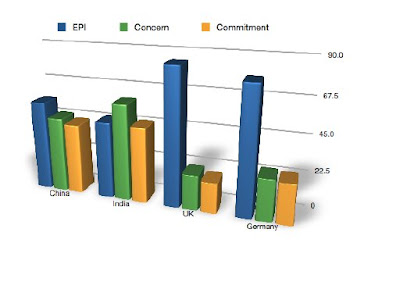Keiretsu is another Japanese expression to put on the list of production vocabulary influenced by Toyota and Honda. The reason for another tongue wrecking Japanese word is the success for Japanese enterprises to built strong relationships with its suppliers. But first some about why strong relationship could be useful when launching corporate carbon strategies.
Hoffman tells an eight-step-story in his book “Carbon Strategies” where a supply chain perspective is very important in order to assess a company’s risks and opportunities with climate change. Hoffman states that interaction with suppliers and buyers are important to increase the value chain’s environmental performances. Michael Knemeyer and Douglas M. Lambert, both working at Ohio State University’s Fisher College of Business in Columbus, wrote an article in the Harvard Business Review titled “We’re in this together” published in December 2004. The article describes a two-by-two matrix where complexity to supplier and volume of buy is the two axels. Let’s use this matrix to explain what Hoffman wants to achieve by the increased interaction with suppliers and buyers. When putting strengthen environmental goals and restriction on suppliers the complexity of relationship increases by adding a value not directly linked to price, delivery or product quality.

If an average complexity line is drawn into the matrix the motion of suppliers and buyers increased complexity will push them to the right, making more suppliers and buyers to end up as high-complexity relationships. Knemeyer and Lambert writes that those suppliers/buyers who end up in the top right corner should be consider as prioritized. It is suggested in the article that the company and its prioritized suppliers and buyers should engage a partnership. After evaluating the desire of partnership at respective company and with what ease they could coordinate activities, they can enter three types of partnership.
Type 1 – In which coordination is limited
Type 2 – In which activities of multiple divisions are integrated
Type 3 – In which each company views the other as an extension of itself
With this partnership model company can interact with its suppliers and buyers to achieve the environmentally goals stated through the supply chain. Since the use of LCA provides an overview of the supply chains emissions the supply chain perspective is suggested to meet the emission goals in an efficient way.
Published the same month in the same Harvard Business Review is an article by Jeffrey K. Liker and Thomas Y. Choi professors at University of Michigan respective W.P Carey School of Business at Arizona State University. They introduce the Japanese expression “supplier keiretsu”, which basically is a “close-knit networks of vendors that continuously learn, improve, and prosper along with their parent companies”. In other words; building strong relationships with suppliers and buyers through engaging them into the company’s daily operations. Liker and Choi manage to show proof of the benefits of supplier keiretsu on eight different points. The most important conclusion about keiretsu is that a long term interaction with suppliers and buyers can increase productivity, improve quality and reduce costs along the suppliers. A good deal for Honda who is taking 50% of the cost savings.















